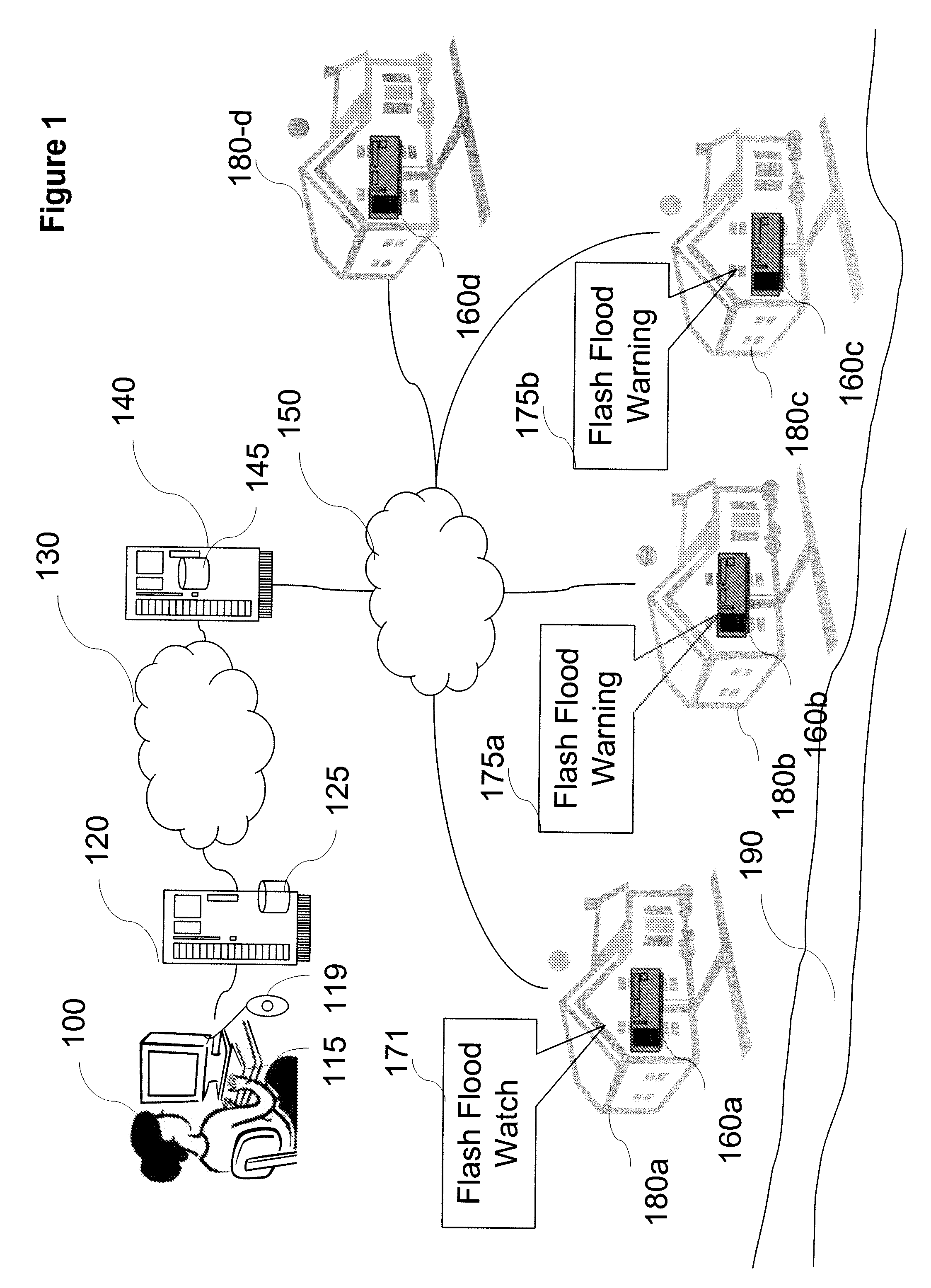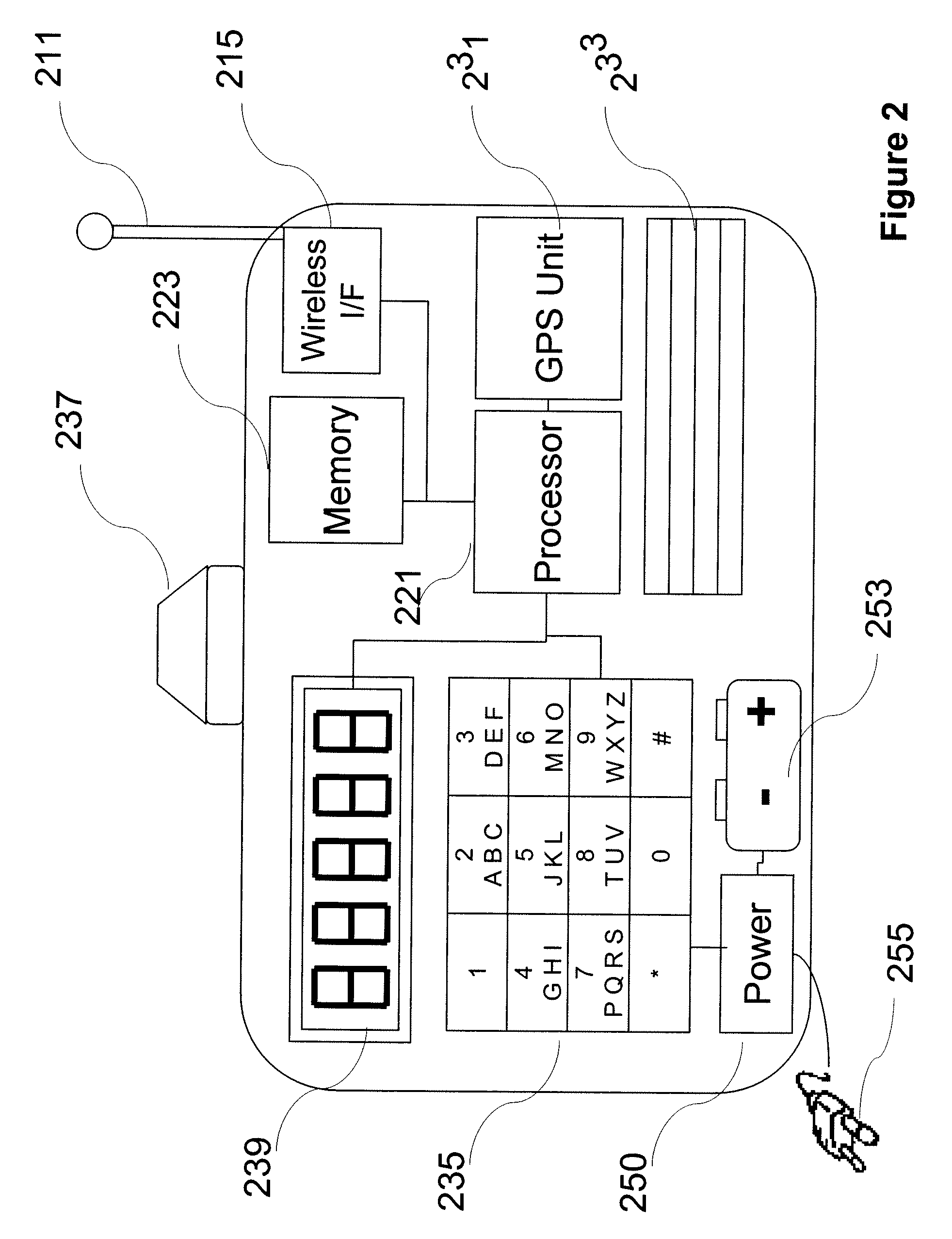Method and apparatus for notification of disasters and emergencies
a technology for emergency notification and disasters, applied in electrical devices, telephone communications, instruments, etc., can solve problems such as unreachable notification systems, significant loss of life, and inability to address problems by modifying existing systems
- Summary
- Abstract
- Description
- Claims
- Application Information
AI Technical Summary
Benefits of technology
Problems solved by technology
Method used
Image
Examples
Embodiment Construction
[0031]Referring now to the drawings, and more particularly to FIG. 1, there is shown an operator 100 using a keyboard 115 and mouse 119 to input an alert to a computer 120 connected to an emergency notification network 130. The computer 120 includes a machine-readable medium 125 containing instructions to enable the computer to perform emergency notifications according to the present invention. An emergency alert server 140 receives an emergency notification with distribution instructions and distributes a flash flood alerts over a wireless network 150 to registered terminals 160a, 160b, 160c located in residences 180a, 180b, 180c. The emergency alert server 140 includes a machine-readable medium 145 containing instructions to enable the computer to perform emergency notifications according to the present invention. A “Flash Flood Watch” notification 171 is transmitted to a residence 180a facing only moderate risk, while a “Flash Flood Warning” notification 175a, 175b is transmitted...
PUM
 Login to View More
Login to View More Abstract
Description
Claims
Application Information
 Login to View More
Login to View More - R&D
- Intellectual Property
- Life Sciences
- Materials
- Tech Scout
- Unparalleled Data Quality
- Higher Quality Content
- 60% Fewer Hallucinations
Browse by: Latest US Patents, China's latest patents, Technical Efficacy Thesaurus, Application Domain, Technology Topic, Popular Technical Reports.
© 2025 PatSnap. All rights reserved.Legal|Privacy policy|Modern Slavery Act Transparency Statement|Sitemap|About US| Contact US: help@patsnap.com



